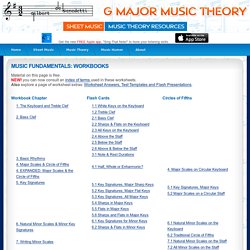

10 Essentials On Guitar Improvisation. Photo by Simone13 AKA John Pastorello Besides writing and playing songs I just love improvising. When I practice improvising I always first pour myself a cup of green tea, I put on some folk music (e.g. Ray La Montagne, Damien Rice, Stephen Fretwell, Glen Hansard, Sheryl Crow, etc.) on Last.fm or Spotify.com and then I start to improvise over these songs. I get totally caught up in the moment and let my fingers carry me away. Other times I practice melodic patterns, triads, arpeggios, licks, everything that will spice up my improvisation skills. Improvising is one of the most fun and fulfilling aspects of guitar playing, but also something that requires a lot of hard work and dedication.
Here are 10 basic essentials that will help you become a better improviser. 1 – Pentatonics / blues Learn to play the pentatonic/blues scale all over the neck in all five shapes. 2 – Major Scale Next to the pentatonic scale, the major scale is the most important scale to learn. 3- Melodic patterns Example: Free Music Theory Worksheets! Material on this page is free.NEW!

You can now consult an index of terms used in these worksheets.Also explore a page of worksheet extras: Worksheet Answers, Test Templates and Flash Presentations. Here are some testimonials from music teachers about these workbook chapters: I have been using your fantastic music theory sheets and PDF downloads to teach high school piano theory to 28 students per class, all of whom are at different levels of study and accomplishment. Your method is comprehensive and easily accessible to students of all ages.
What a great philanthropist and talented musician you are and it is indeed a pleasure to have discovered that I can thank you (in person) on Facebook ... I am excited about the way my students have received this material. Joyce T. Hi, I am a High School teacher in California and I found your Theory Website. Material on this page is free.NEW! Here are some testimonials from music teachers about these workbook chapters: Jazz Progressions. Jazz Progressions are simply common chord progressions in jazz music.

One of the most common progressions is the ii-V-I progression. The ii-V-I sounds at its best when you use seventh chords and their expanded voicings. As you already know from past lessons, the ii chord is a minor chord, the V chord is a dominant chord, and the I chord is a major chord. So the most basic Jazz progression is the ii minor 7 - V dominant 7 - I major 7. In the key of C, this progression is Dm7-G7-Cmaj7. Below, you will find a few examples to experiment with in addition to a set of chord diagrams showing various ii-V-I progressions. Teoría - Music Theory Web. Scales and emotions. See also a post about making chords from scales.

So maybe you want to write a song or an instrumental in a particular mood or style, and you’re feeling overwhelmed by all the scales. Here’s a handy guide to the commonly used scales in Western pop, rock, jazz, blues and so on. Click each image to play the scale right in your browser with the aQWERTYon. These scales have a major third (E in the key of C), which makes them feel happy or bright. Major scale Happy; can be majestic or sentimental when slow. Mixolydian mode Bluesy, rock; can also be exotic/modal.
Lydian mode Ethereal, dreamy, futuristic. Lydian dominant mode Also known as the overtone scale or acoustic scale, because it is close to the first seven pitches in the natural overtone series. Phrygian dominant mode Exotic, Middle Eastern, Jewish. Harmonic major scale Majestic, mysterious. These scales have a flat third (E-flat in the key of C), which gives them a darker and more tragic feel. Natural minor scale (Aeolian mode) Dorian mode. Interactive Circle of Fifths. The Interactive Circle of Fifths is a free online music theory tool designed to help musicians to interpret chord progressions, easily transpose music to a different key, compose new music, and understand key signatures, scales, and modes.

It goes beyond the limitations of a traditional, static diagram without sacrificing clarity and simplicity, and it includes an extensive User's Guide to help you discover all that it has to offer.